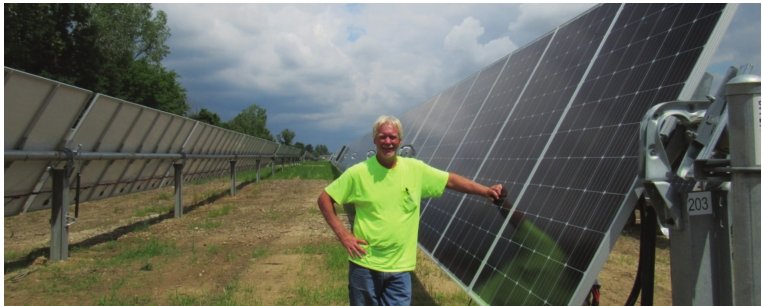
After about a year of construction, the Delta Solar Plant is fully operational. More than 86,000 solar panels in Delta Township now provide electricity for 3,300 homes for Lansing Board of Water & Light customers.
Delta Solar started generating power in late June and reached full capacity of 24-megawatts by August. It is the second largest solar field in Michigan. Only DTE Energy’s 45-megawatt plant in Lapeer is larger. And the string of corporations involved with the new plant reads like a long list of credits in the production of a major movie.
Delta Solar is owned by CMS Enterprises.
CMS Enterprises is part of CMS Energy, which is the parent company for Consumers Energy. CMS Enterprises worked with goSolar to build the power plant. goSolar is part of EDF Renewables. The Lansing Board of Water & Light is contracted to buy electricity from Delta Solar.
BWL spokesman Stephen Serkaian said the utility has a 25-year power purchase agreement with CMS Enterprises to pay for the power provided by Delta Solar. The agreement — depending on the actual annual energy output — is expected to cost an average of $2.6 million per year, he said.
No BWL funds were used to build the site, and no rate changes are expected for customers. The two remaining coal-fired power plants are pegged to retire. The Eckert Station will close in 2020 and the Ericson Station will close in 2025. And Delta Solar will replace some of the capacity lost by these plant retirements, Serkaian added.
“Delta Solar is part of BWL’s clean energy portfolio, which includes the Cedar Street solar array in Lansing, wind energy in Gratiot County, landfill gas energy from Granger waste facilities and hydroelectric power,” Serkaian said. BWL officials have also vowed to provide 30 percent clean energy by 2020, climbing to 40 percent by 2030.
The solar power plant rests on about 190 acres in Delta Township, adjacent to the General Motors Lansing Delta assembly plant. The vast collection of reflective, solar panels is visible between Canal Road and M-100.
Land leased from several local property owners helped to assemble the site, CMS Energy spokesman Brian Wheeler said. He said most of the land was either vacant or used for farming. And neither CMS Energy or BWL officials would reveal the total costs associated with the project.
The electricity generated is directed to a substation on Canal Road, from which all the power goes directly to BWL. Electronic parts come from multiple suppliers from various countries, but roughly 100 local laborers were involved with the construction — with landscapers and maintenance staff to follow.
Darin Bacon was one of the last to help complete the project. Bacon, a Navy Sea Bees-trained electrician, began work on the solar fields in March for Swan Electric Co., which has an office in Lansing.
“Swan did all the underground electrical, all the piping and all the tie-ins of the panels,” Bacon noted. “It’s fantastic technology.
I’m absolutely amazed at how much power each individual panel produces.”
Depending on cloud cover, each panel produces nine to 10 amps on a clear day. That would mean it would take about 10 panels to produce 100-amp service to a home. And electricity can also be produced during cloudy days. Bacon said up to 600 volts can be generated through inches of snow and ice.
The smooth, silicone solar panels are from plants in Singapore and China. “Like a sheet of Plexiglas,” Bacon said. And they move slowly to follow the sun. Doppler radar stations detect pressure, temperature and wind speed to warn of severe weather. Panels will lie flat, for example, should a tornado arrive into the nearby area.
DC shut-offs, AC disconnects, safeguard switches and cooling fans are also included on each of the 4,800 rows. There are heaters in the switchgears for cold weather. “There’s a safety device on everything,” Bacon emphasized.
Support City Pulse - Donate Today!
Comments
No comments on this item Please log in to comment by clicking here